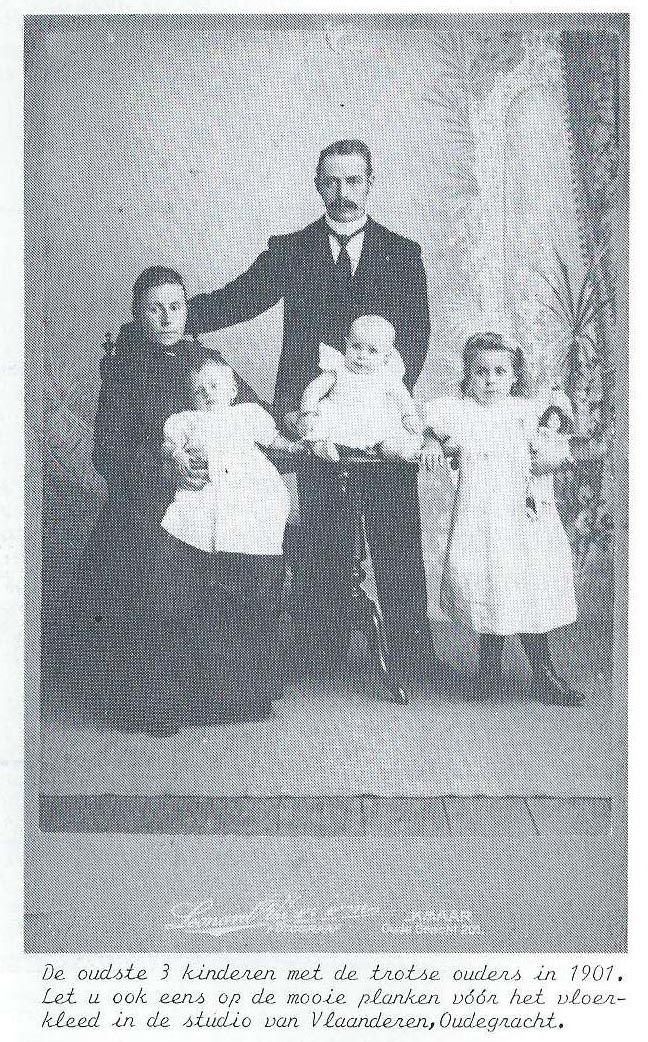 Architectural drawing by Adam Kaldenbach, 1901, recently found in the attic of the St. Laurentius Church Alkmaar (in December, 2015).
Architectural drawing by Adam Kaldenbach, 1901, recently found in the attic of the St. Laurentius Church Alkmaar (in December, 2015).
New in 2016!
 Architectural drawing by Adam Kaldenbach, 1901, recently found in the attic of the St. Laurentius Church Alkmaar (in December, 2015).
Architectural drawing by Adam Kaldenbach, 1901, recently found in the attic of the St. Laurentius Church Alkmaar (in December, 2015).
Drawing in pencil on thick paper by Adam Kadenbach, carpenter in Alkmaar, born 13 feb 1869, died c. 20 july 1950. He is my paternal grandfather but as I was born in 1953, I have never met him. He was a severe, hard working ultra Roman Catholic man who gave his energy constructing ‘’Baldachines” in his home town of Alkmaar, multi tiered oak ornaments for topping saints statues in the church of St Laurentius / Lawrence, on Verdronkenoord canal, Alkmaar.
When in 1894 he joined the National militia, his height was 1. 68 m.
One year later, in 1895 he married Veronica (Kaatje) Frederiks, born 1874.
Their children were Jo, Aat, Jan, Vroon, Joop (he is my father), Ali, and finally a child born lifeless.
This drawing below by Adam, size 61 x 27.8 cm is signed and dated November, 1901 and shows a portico in a church. Having limited finances as a carpenter, Adam Kaldenbach only travelled between Alkmaar and Amsterdam (going there by Packet boat on Sundays, and often visiting the Rijksmuseum that opened in 1885), but he did not travel the rest of Europe. It is possible that he used an illustration in a book or magazine, perhaps the Katholieke Illustratie magazine, published from 1867.
The architecture looks like a late Mannerist or early Baroque church with a very tall and narrow door, flanked by fluted columns with tiny Doric tops, and to the side the repeted multiple scrollwork that is definitely Mannerist. The drawing has a date added: 1613 but not the name of the building.
The drawing shows pinpricks, as it was once attached to a drawing table.
Top part:
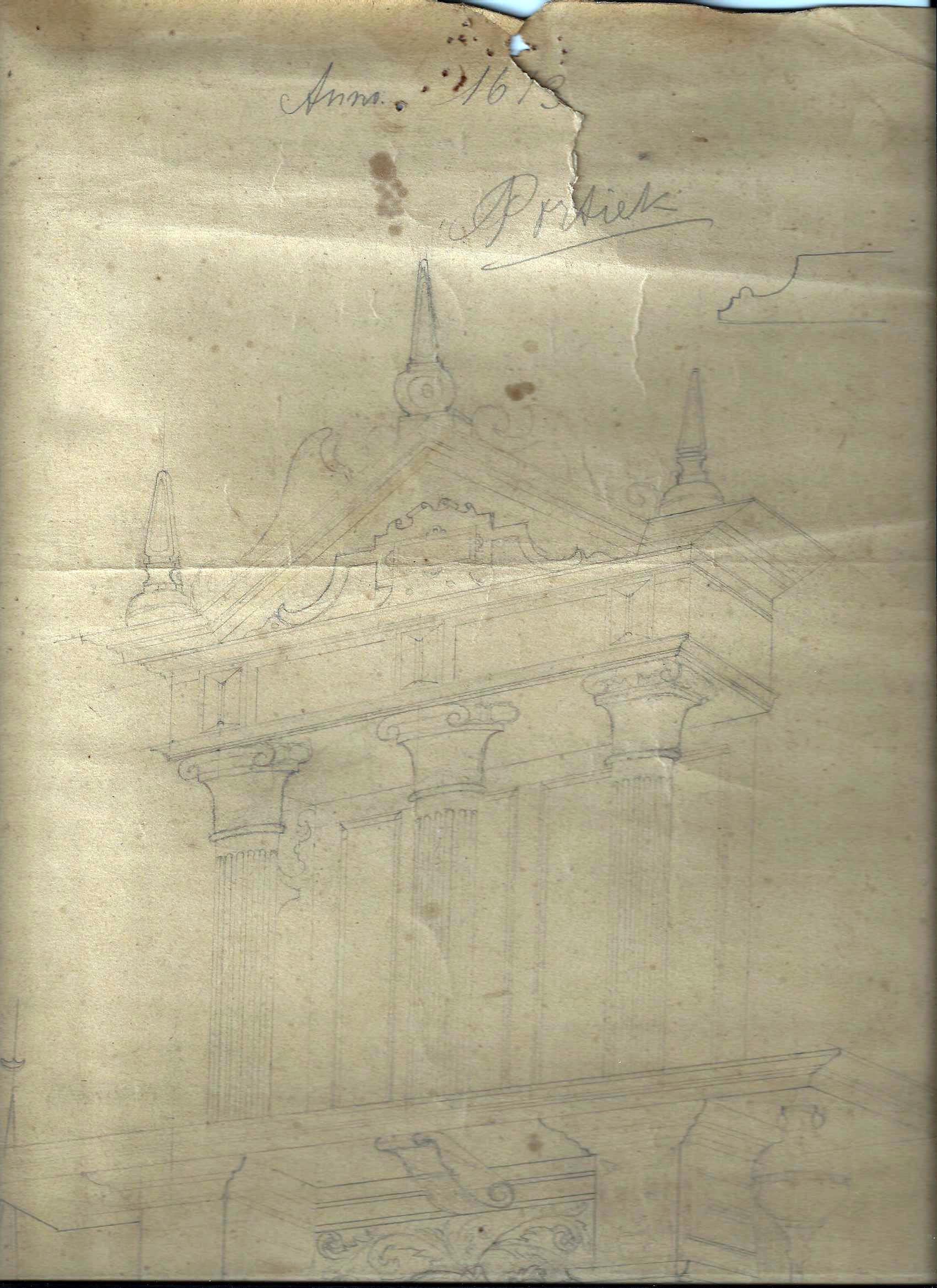
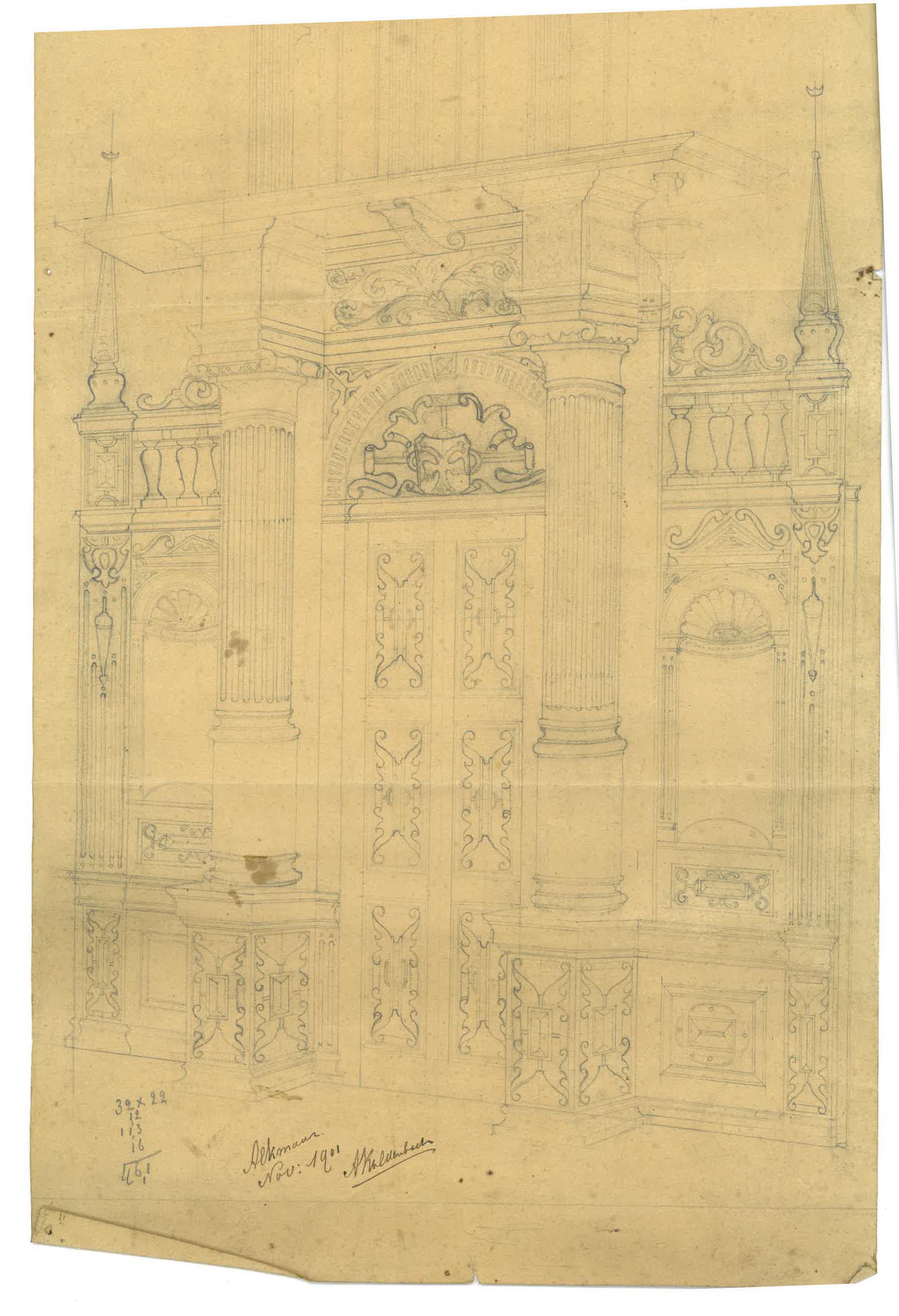
Below is a detail showing the coat of arms with the double Habsburg Eagle. Perhaps it is a view in a church within the former Austrian-Hungarian double monarchy or a church in Germany.

The wooden box in which the drawings were found also contained technical study drawings for woodwork, for instance window frames. They were made in his study years.
Function: formerly crowning a statue of a saint, once part of church inventory, St Lawrence (Laurentius) church Alkmaar, Holland.
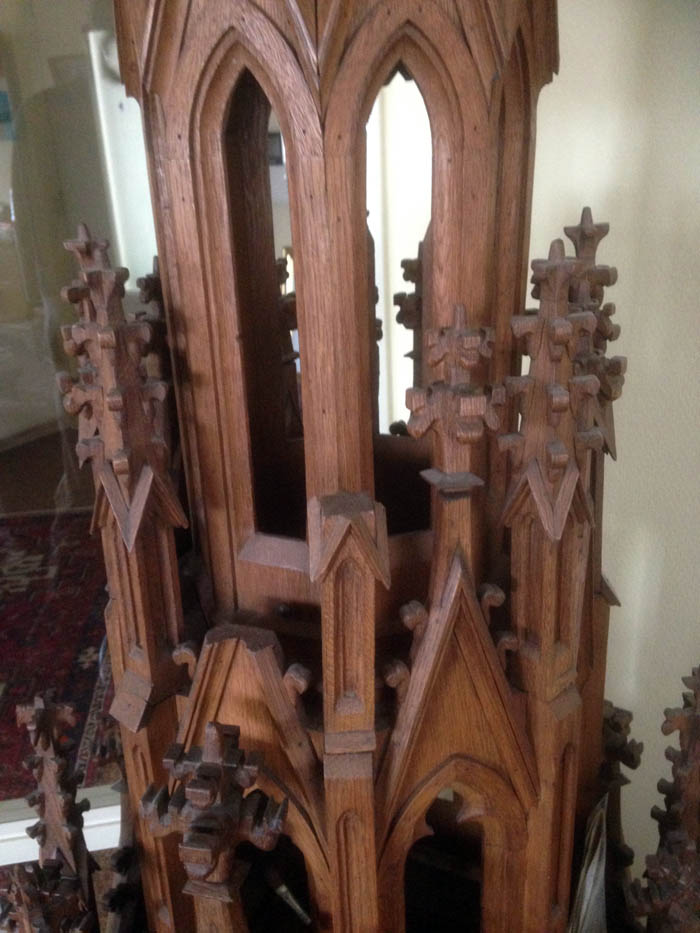
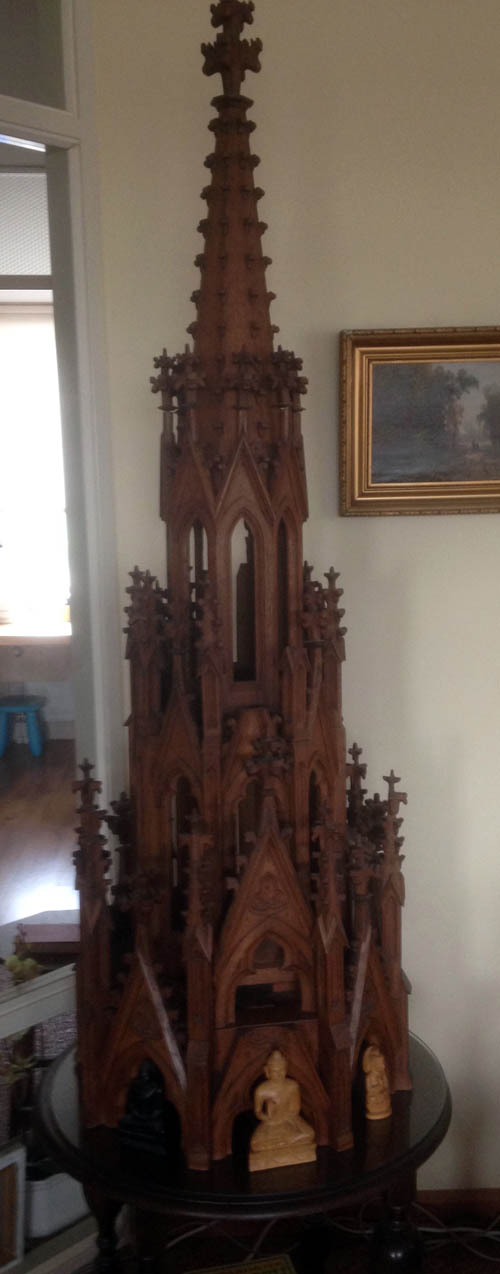 Produced in his retirement years, both daytime and evening hours, finished in 1939 by Adam Kaldenbach (born Hoorn, 1869, deceased Alkmaar 1950). He was fiercely old-school Roman Catholic and made this baldachin (and a number of other similar baldachins) out of love for God, for free and offered them to the Dean of the church. He barely was rewarded with a cigar, and did not get proper respect and thanks or even a meal with the Dean for producing it. For he was lower class, not middle class. He had to beg to get the cost of the oak reimbursed.
Produced in his retirement years, both daytime and evening hours, finished in 1939 by Adam Kaldenbach (born Hoorn, 1869, deceased Alkmaar 1950). He was fiercely old-school Roman Catholic and made this baldachin (and a number of other similar baldachins) out of love for God, for free and offered them to the Dean of the church. He barely was rewarded with a cigar, and did not get proper respect and thanks or even a meal with the Dean for producing it. For he was lower class, not middle class. He had to beg to get the cost of the oak reimbursed.
In the post 1963 reforms of the Roman Catholic church all baldachins were ripped out of the Laurenskerk and dumped in the church back garden, left in the rain and they rotted and perished there. Two got saved. It was given by the person who saved it to our family.
Adam Kaldenbach was an educated and cultured man who originally worked for the Packet Boat line sailing between Alkmaar and Amsterdam. On Sundays he got free rides on this shipping line to Amsterdam where he often visted the Rijksmuseum. Later on he worked for 10 years for a church organ maker, the Pels firm.
Quote from a letter, written All Saints Day, 1942 from Adam Kaldenbach (1869-1950) to his son Joop Kaldenbach (born 1906) who was an enforced labourer in Nazi Germany at that moment.
" You asked me about the Baldachins. I have had much interest in my work, and I have also had Medical Doctor Van Gilse at my home - he thought it was a splendid piece of craftsmanship. I have also had a visit of a Friar of the ... church in my home and he made big eyes- the more he looked the more he saw. He said it was a Pleasure [In Dutch: Lust] to behold. I also had the Right Honorable Dean [in Dutch: Deken] here, and he stayed some hour and a half, and in the end I received 30 Guilders [probably for cost of the oak]. and at the end of this month the Baldachin will be transported to the church, that is quite soon but also nice. - but anyway that is what it has been made for.
Concerning the 1st Baldachin, all of the wood has been made from thick and wide pieces of oak wood. I am now busy with the Cupola, that will take a good 3 months of work and I hope to finish it in September 1943..."
Meer over mijn familie lezen bij: De Weesjes Klaver
en bij Het Geslacht Hinke
Update 22 January, 2016
Below: Pages on Adam Kaldenbach:
Biography by Jos Kaldenbach: Het Geslacht Kaldenbach, private edition, Alkmaar, 1985.
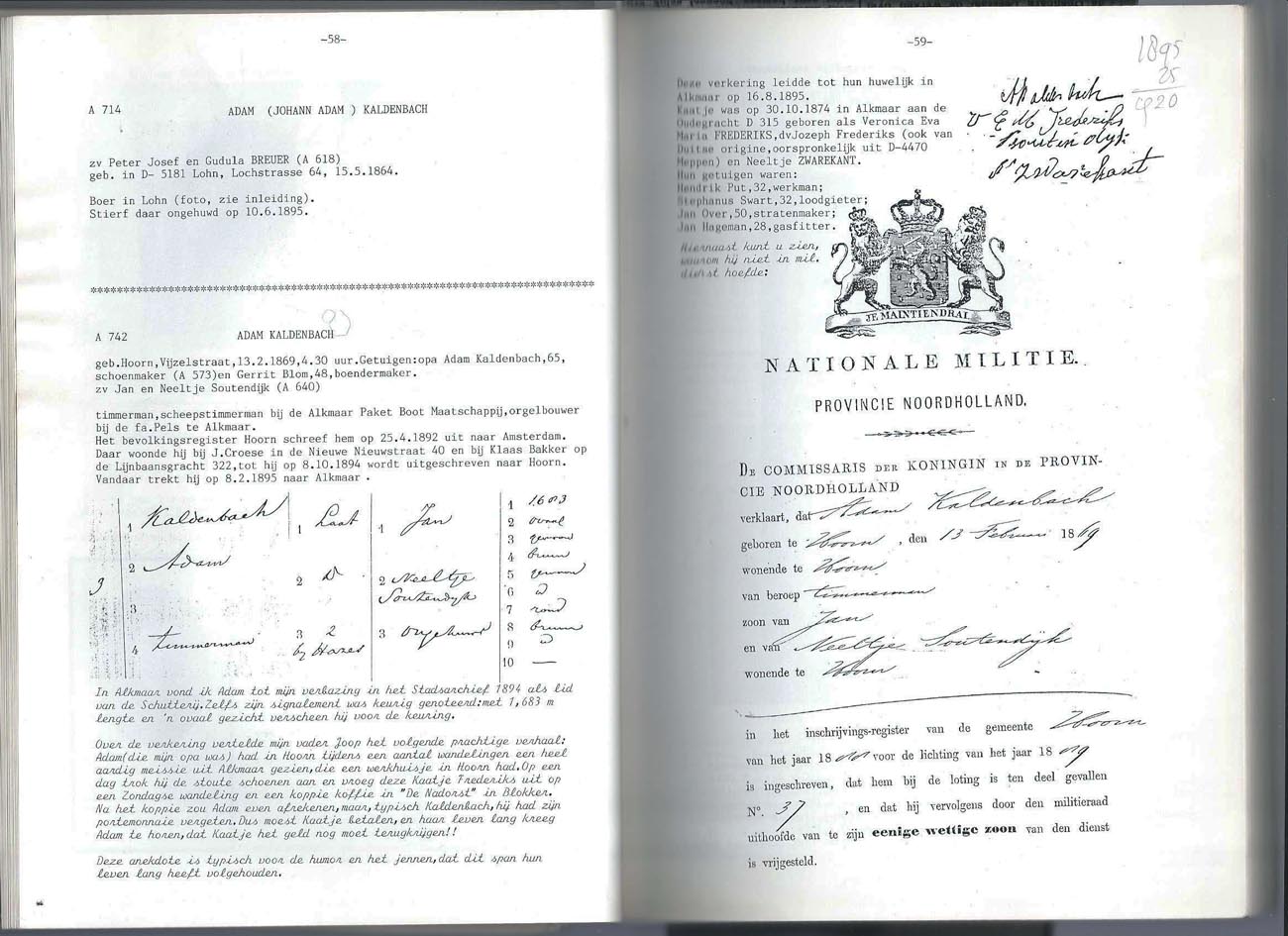
Below: Picture with 3 children, dated 1901.
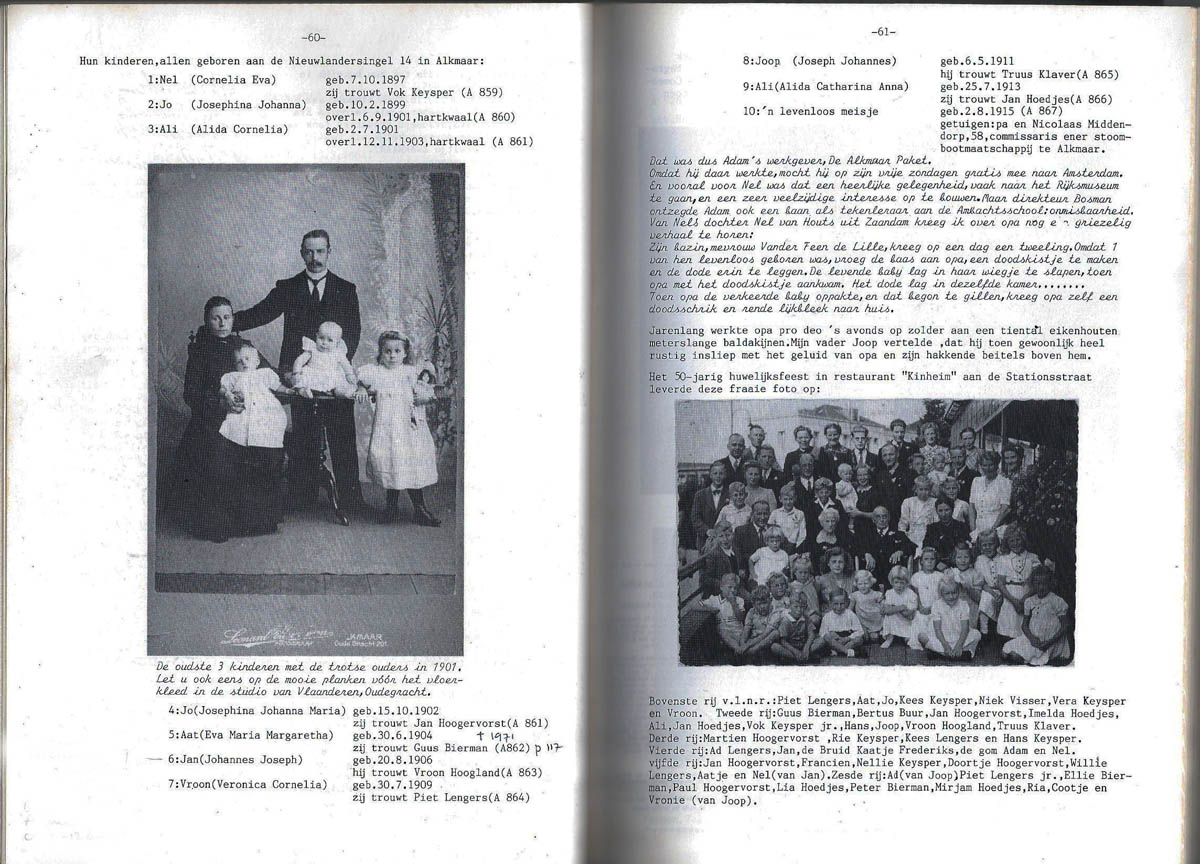
Page about Adam in the Family Biography by Jos Kaldenbach (my brother) in the book Het Geslacht Kaldenbach, privately published, 1985. Our own father is indicated as nr 8 here. The family tree in this book goes back to the 17th Century and comprised thousands of names.
xx
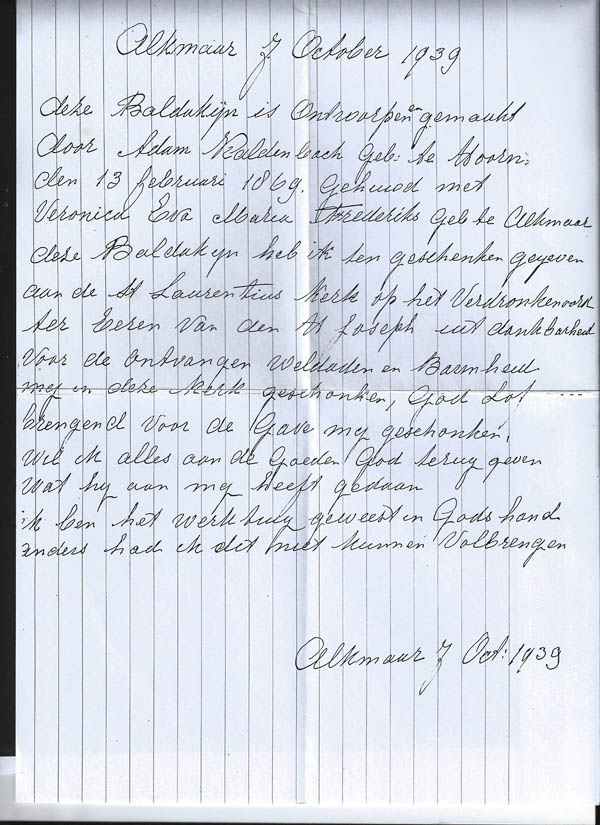
Handwritten Affidavit of origin, 1939, stored within the Baldachine when he donated the object.
Below: Before he died his leg suffered from gangrene. Because of a family business of one of the children the burial had to be postponed, and the summer being hot, the room in which he was laid in a coffin smelled to high heaven for a long time.
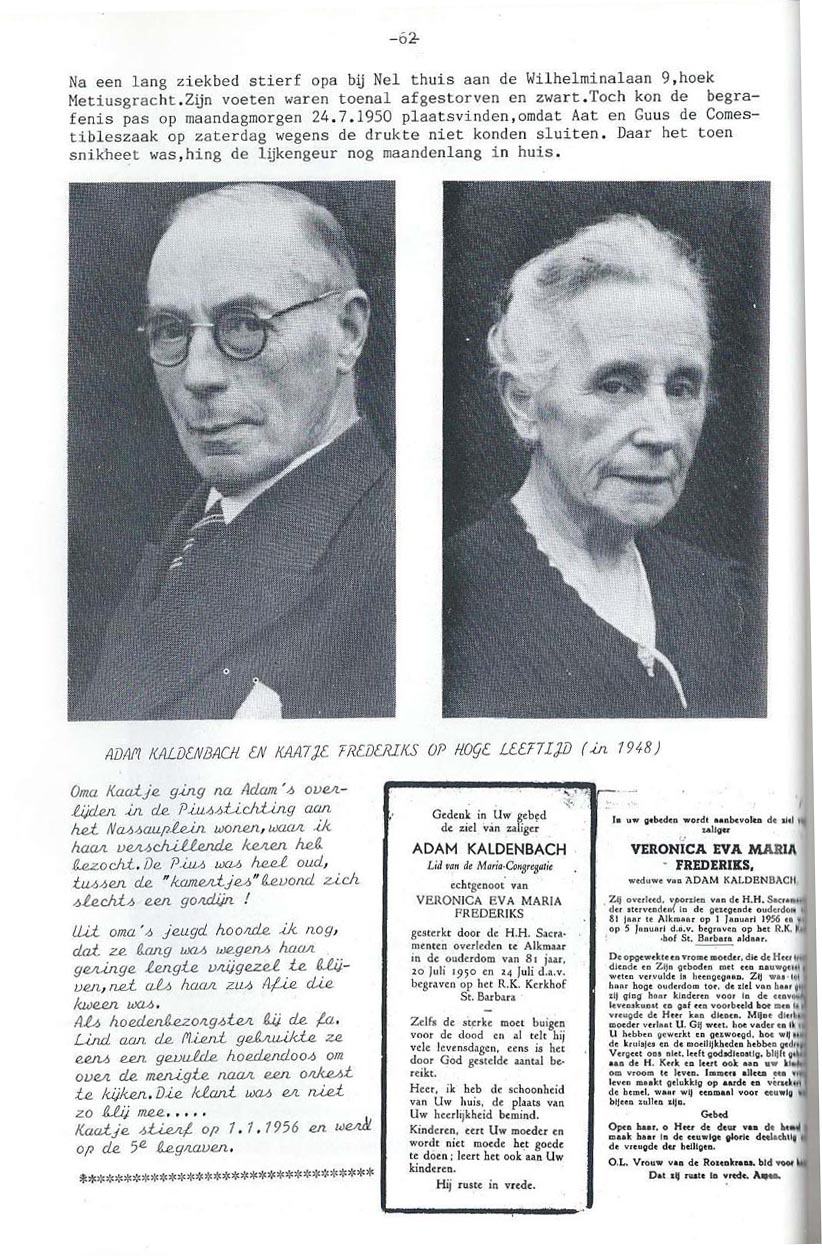
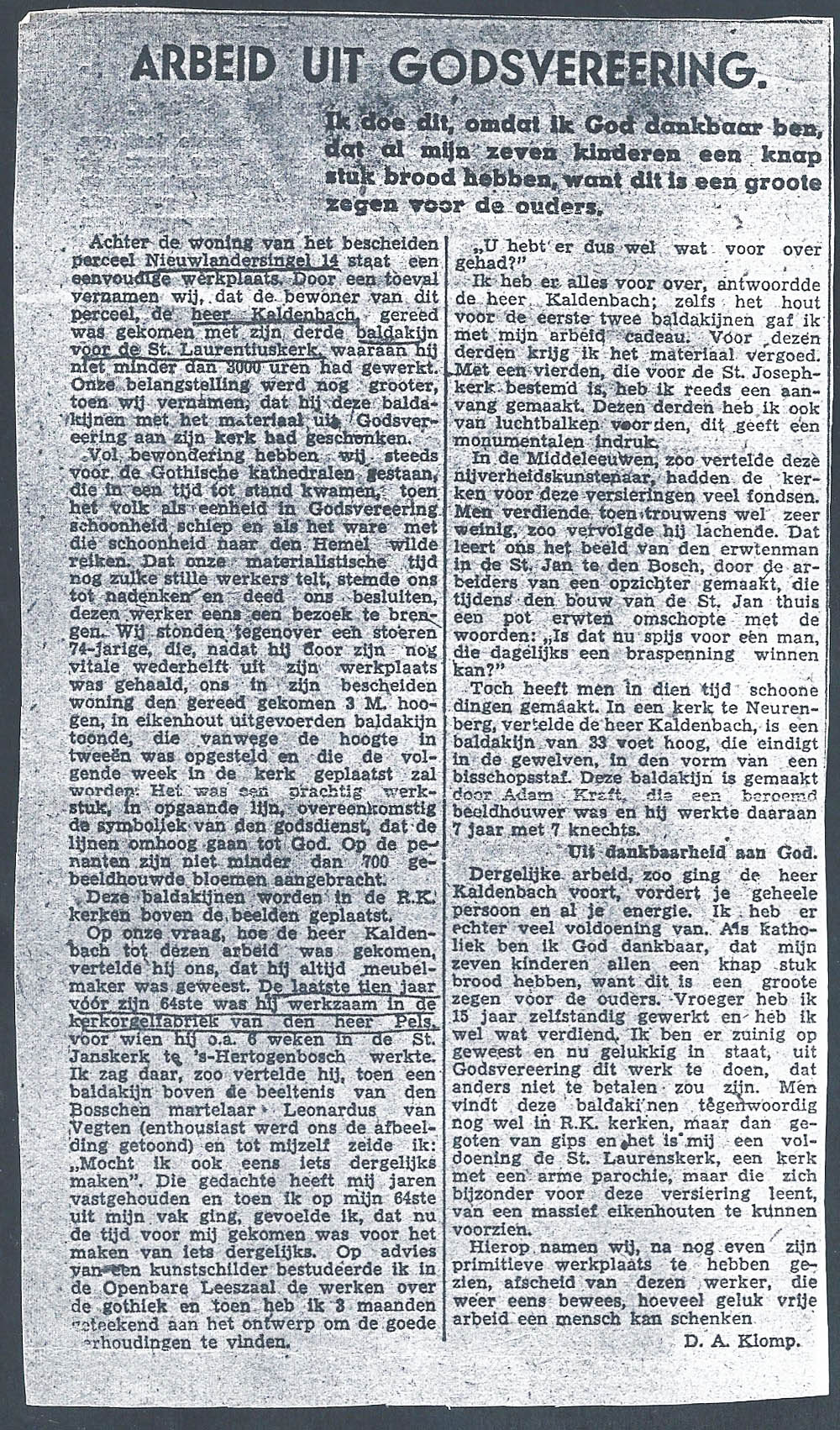
Adam Kaldenbach is reported here working for church organ factory Pels, (kerkorgelfabriek Pels). Clipping from an unknown newspaper, probably a Roman Catholic church weekly or monthly.
Meer over mijn familie lezen bij: De Weesjes Klaver
en bij Het Geslacht Hinke
Baldakijn in 3000 manuren Geslacht-Kaldenbach-baldakijn
Update January 25, 2016.
Research and copyright by Kees Kaldenbach. A full presentation is on view at www.xs4all.nl/~kalden/